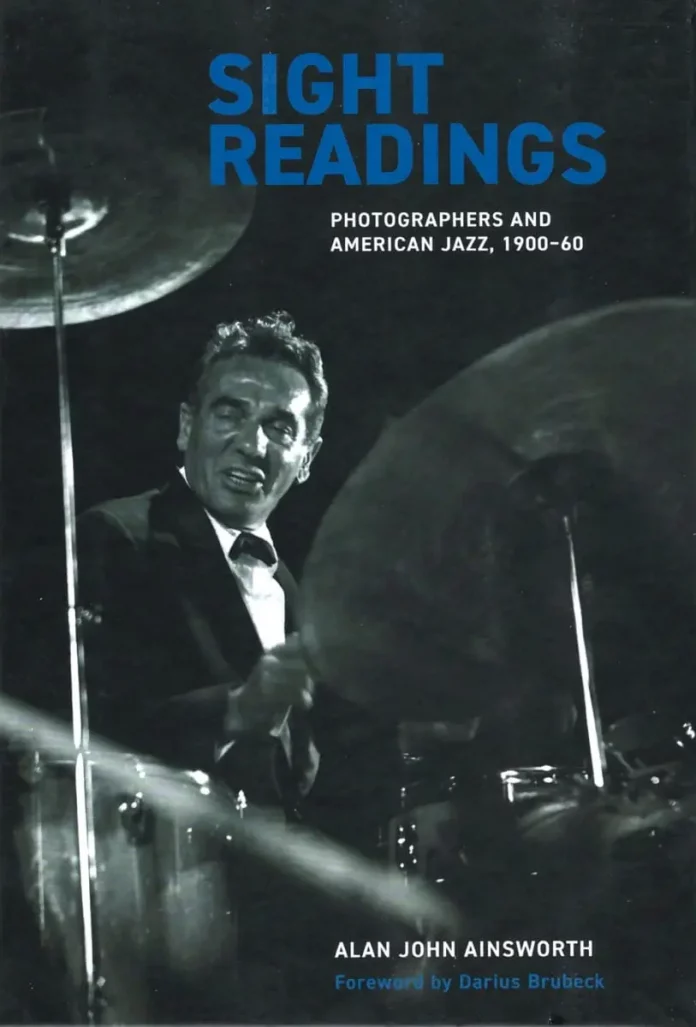Alan Ainsworth is a photographer with specialist interests in jazz performance and contemporary architecture. His book, published in February 2022, surveys a range of American jazz photographers who plied their trade during the first 60 years of the 20th century.
Ten chapters cover the use of photographs in American jazz historiography; their relevance in documenting the evolution of jazz; expression and visualisation in jazz photographs; the extent of jazz portraits taken by studio photographers; early black American photography; new generation white photography and the output of exiled European and Jewish photographers. The last chapter looks briefly at jazz photography after 1960.
The book’s introduction and appendix collates the case for photographic agency, i.e., agency in the sense of action or intervention producing a particular effect (as opposed to firms which employ photographers). It references various art critics and others who have opined on the matter. For some readers, agency theory can be an arcane subject at the best of times in which case these sections of the book can be safely skipped without detriment to the rest.
The author looks at well-known photographers, such as William Gottlieb, Herman Leonard, William Claxton, Art Kane, Dennis Stock and Bob Willoughby, who are considered to be at the core of the American jazz photography tradition. They frequently came from educated, white, middle-class families and several had associated careers in film, fashion and advertising. This is then contrasted with the experiences of their largely underprivileged black contemporaries such as Allen Cole, Bob Douglas, Howard Morehead and Milt Hinton. The latter group were often employed by black community newspapers or local studios and their interest in jazz photography developed from there.
Ainsworth makes the interesting observation that by 1910 the cost of a camera, lens, tripod and film with developing and printing materials had fallen to 10 dollars. It was this, together with the advent of affordable basic photographic instruction courses, which encouraged many African Americans to set up shop within their local communities.
We are given colourful pen pictures of some of these less recognised photographers but often their names are supplied without background information. Similarly, Ainsworth provides us with interesting commentaries on the work of European and exiled Jewish photographers, many of whom emigrated from Germany prior to the second world war, but there is a lack of pictorial evidence to illustrate their output. For instance, while we read that Lisette Model’s photographs of Louis Armstrong, Duke Ellington and Ella Fitzgerald at the 1956 Newport Jazz Festival “exhibit her stylistic trademarks – off-kilter compositions and unusual viewpoints”, it would have been instructive to see examples of such work. I recognise the limits imposed by space constraint and there may well be copyright issues in some instances but where the latter is not the case the book would certainly benefit from supporting evidence in this area.
On a practical level – the reader’s flow is at times interrupted by simple typing errors which the sub-editing process should have picked up. A stronger proofreading process would have also been helpful in alleviating the difficulty in understanding a small number of passages where long and convoluted sentence form has been employed. Hopefully these issues can be ironed out by the publishers.
It’s clear that considerable time and effort on the part of Alan Ainsworth has gone into putting this book together. Indeed, just to have read and researched all the references cited in his extensive chapter notes, list of archives consulted and bibliography must have been a mammoth task. The bibliography alone runs to 58 pages.
The book will be a fruitful addition to your library if you’re interested in the history of jazz photography. It has a foreword by Darius Brubeck and a comprehensive index. All the images are in black and white. The photograph on the hard cover is of Gene Krupa at Newport 1958 taken by Ted Williams.
Sight Readings: Photographers And American Jazz, 1900-1960 by Alan John Ainsworth. Intellect Books Ltd, hb, 472 pp, 135 photographs, 172 x 38 x 241 mm. £35. ISBN 978-1789384215
















